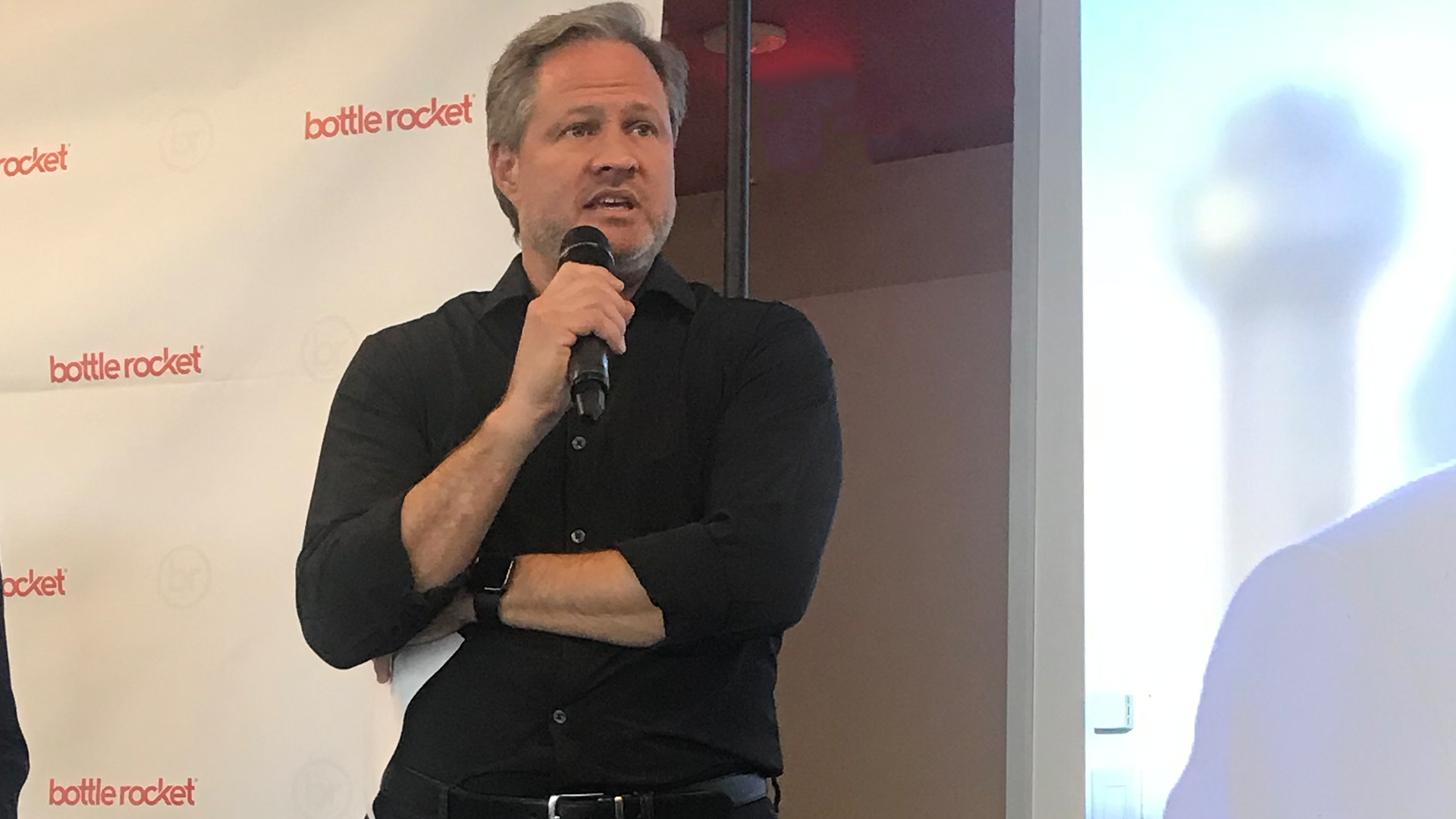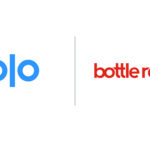Published by
Bottle Rocket CEO & Founder Calvin Carter provides insights on the company’s new “work from wherever” model, maintaining a collaborative spirit, and adapting to the future of work and business.
This Q&A is part of an ongoing series of DRC interviews with representatives from our member organizations about how they are facing the COVID-19 pandemic.
Q: How is Bottle Rocket adapting to COVID-19 and changing the future of work?
A: Bottle Rocket has always been an innovator. A decade ago, we pioneered the concept of working cross-functionally versus departmentally in pods surrounded by whiteboards, which later became the norm for many companies around the globe.
But like everyone else when COVID-19 hit, we shifted to a work-from-home mandate to protect employees and their families. What we quickly learned is that we don’t have to all be under the same roof to do game-changing work for our clients, and we don’t all have to sit together to maintain our normal level of collaboration and cross-functional work. Through the use of technology, advanced tools, and revamped processes, we have been able to continue “business as usual” while still delivering immense value to our customers. This led to our new future we call “work from wherever.” To us, this isn’t unique to this time. We are always challenging and iterating on everything in our business. The pandemic simply forced us to embrace a new way of working much faster, and after just a few short months, we knew that the time was right to make this a permanent shift.
What I feel is different from other work-from-home announcements is the very specific and purposeful use of the word “wherever.” Wherever indicates the sense of place is less important than some other element. In this case, we are sending a strong, fresh message that the “work” is more important than the place the work is done. This honors the employee as a person of craft and skill, and trusts them to act as the adult they are to make the best decisions based on all the valid information they have – which includes ways of working that are uniquely effective to them. Wherever could mean at home, in our amazing office space, across the country, or outside in a park with an internet connection.
We estimate we are 10% more efficient working from wherever. This has allowed people to trade the stressful, expensive, and time-consuming commute to more time working productively or spending time with friends and family. This doesn’t mean we’re getting rid of our office. Physical interaction is still very important, but it’s not the most important thing.
Q: How do you maintain your sense of culture and collaboration, and continue to grow as a team through remote work?
A: I’ve been nothing but impressed with our team’s ability to really come together during this challenging time. I believe our success can be attributed to our balanced focus on tools, processes, people, and culture. We’ve leaned on many terrific tools such as Slack, Zoom, the Atlassian suite, and Salesforce, but we’ve also brought on many new ones in the past few months, including Miro (virtual whiteboards which are simply awesome), Lattice (employee engagement), Teem (office space reservations and hoteling), and VacationTracker.io (vacation management), that have helped us manage our business efficiently and effectively.
I define culture as the space between the people in an organization. It’s how you treat one another, speak to one another, honor promises, socialize, and empathize. That space is just as important in a work-from-wherever environment, but that space is redefined to not just be in person, but through a whole host of other experiences that we are able to make possible by properly leveraging technology and ensuring our staff is always connecting with one another. We have open sourced our culture and invite ideas from all corners of the company. Leveraging the power of diversity, we can ideate and execute much better ideas than more traditional organizations.
Q: What trends are you seeing in the types of apps companies are creating (or additions to existing apps) as a result of COVID-19?
A: The types of requests we are receiving from clients is really not too different from how it was pre-COVID-19. However, the reason why clients are coming to us has changed dramatically. Pre-COVID-19, digital was seen as a competitive differentiator for most of our clients. Since the pandemic, digital delivery of services has become table stakes.
In a future world greatly changed by COVID-19, being able to conduct simple actions digitally is a requirement, and finding points of differentiation will require more continual investment and dedicated focus from the entire executive leadership group. In this new world, we are seeing three main types of customers.
First, there are the digitally mature. These organizations have made prior investments in digital and have established digital customers; think Chick-fil-A or Chipotle. Chick-fil-A moved on mobile ordering long before it was an industry standard. Chipotle has easily been able to flex the power of its digital platform and has seen 50% growth in its loyalty enrollment and digital sales soaring 80.8%.
Next, there are those that were early stage digital – firms that had started to digitize backend processes and develop customer-facing digital touchpoints. These companies have had a low rate of digital purchases as a percentage of total sales (less than 5%). These firms can compete and drive rapid acquisition of net-new digital customers and retain those customers with relevant experiences and digitally delivered services. In order to do this, however, these companies will need to find a way to prioritize significant spending on customer-facing digital experiences in a time when every single dollar spent is scrutinized by the entire leadership team.
Last, there are the disrupted firms, organizations that had established business models that were performing well before COVID-19 and now have to completely reinvent themselves. When is the next time you plan on going to a music festival or live event with densely packed crowds? Firms in this camp also include discount retailers with variable inventory that doesn’t make sense for digital such as Nordstrom Rack or TJ Maxx.
Within this camp, we are seeing two variants: those that have been disrupted by COVID-19 and consumer behavior changes (i.e., movie theaters, live events, discount retail, etc.), and those who are utilizing the pandemic as a time to disrupt themselves (think Frito-Lay’s recent launch of Snacks.com). Either way, digital is a journey that requires years of maturation, and these firms have to adapt, test, and learn at light speed.
I realize I may be biased, but what I’m saying is the truth – there is likely nothing more important to the survival of your firm than to invest in meeting customers where they are. It’s not just about COVID-19, it’s about very clear and quantifiable changes in consumer behavior that are mandating changes in the way business is universally conducted. Digital is a tool; how you use that tool to accomplish goals, retain existing customers, and attract new customers is what will determine the winners and losers in this new-world order.




